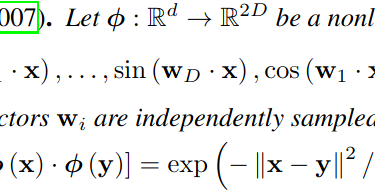Machine Translation Weekly 71: Explaining Random Feature Attention

Transformers are the neural architecture that underlies most of the current
state-of-the-art machine translation and natural language processing in
general. One of its major drawbacks is the quadratic complexity of the
underlying self-attention mechanism, which in practice limits the sequence
length that could be processed by Transformers. There already exist some tricks
to deal with that. One of them is local sensitive hashing that was used in the
Reformer architecture (see MT Weekly
27). The main idea was computing the
self-attention only for hidden states that fall into the same hash function
bucket. Random feature attention, a paper
by DeepMind and the University of Washington, that will be presented in this
year’s ICLR introduces a new way of
approximating the attention computation without materializing the quadratic